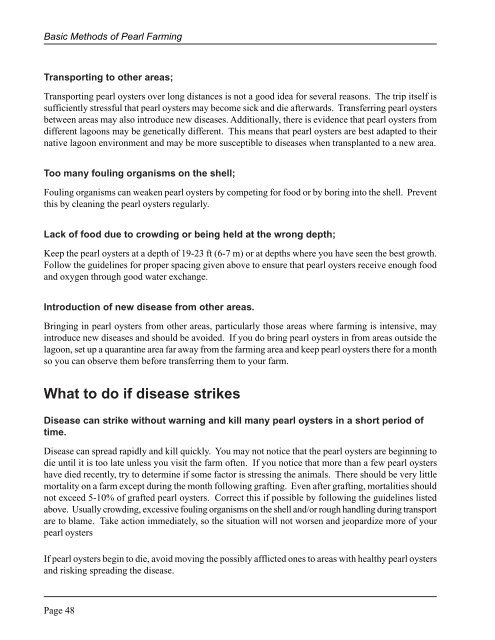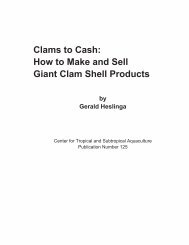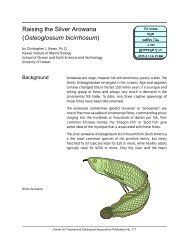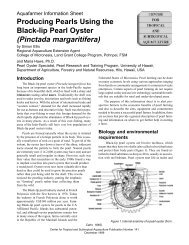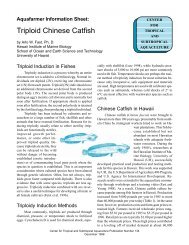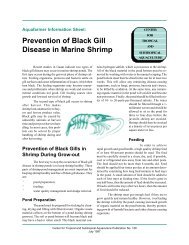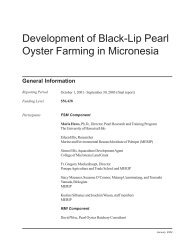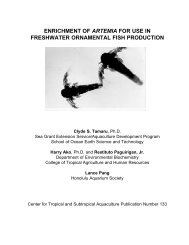The Basic Methods of Pearl Farming: A Layman's Manual - CTSA
The Basic Methods of Pearl Farming: A Layman's Manual - CTSA
The Basic Methods of Pearl Farming: A Layman's Manual - CTSA
You also want an ePaper? Increase the reach of your titles
YUMPU automatically turns print PDFs into web optimized ePapers that Google loves.
<strong>Basic</strong> <strong>Methods</strong> <strong>of</strong> <strong>Pearl</strong> <strong>Farming</strong>Transporting to other areas;Transporting pearl oysters over long distances is not a good idea for several reasons. <strong>The</strong> trip itself issufficiently stressful that pearl oysters may become sick and die afterwards. Transferring pearl oystersbetween areas may also introduce new diseases. Additionally, there is evidence that pearl oysters fromdifferent lagoons may be genetically different. This means that pearl oysters are best adapted to theirnative lagoon environment and may be more susceptible to diseases when transplanted to a new area.Too many fouling organisms on the shell;Fouling organisms can weaken pearl oysters by competing for food or by boring into the shell. Preventthis by cleaning the pearl oysters regularly.Lack <strong>of</strong> food due to crowding or being held at the wrong depth;Keep the pearl oysters at a depth <strong>of</strong> 19-23 ft (6-7 m) or at depths where you have seen the best growth.Follow the guidelines for proper spacing given above to ensure that pearl oysters receive enough foodand oxygen through good water exchange.Introduction <strong>of</strong> new disease from other areas.Bringing in pearl oysters from other areas, particularly those areas where farming is intensive, mayintroduce new diseases and should be avoided. If you do bring pearl oysters in from areas outside thelagoon, set up a quarantine area far away from the farming area and keep pearl oysters there for a monthso you can observe them before transferring them to your farm.What to do if disease strikesDisease can strike without warning and kill many pearl oysters in a short period <strong>of</strong>time.Disease can spread rapidly and kill quickly. You may not notice that the pearl oysters are beginning todie until it is too late unless you visit the farm <strong>of</strong>ten. If you notice that more than a few pearl oystershave died recently, try to determine if some factor is stressing the animals. <strong>The</strong>re should be very littlemortality on a farm except during the month following grafting. Even after grafting, mortalities shouldnot exceed 5-10% <strong>of</strong> grafted pearl oysters. Correct this if possible by following the guidelines listedabove. Usually crowding, excessive fouling organisms on the shell and/or rough handling during transportare to blame. Take action immediately, so the situation will not worsen and jeopardize more <strong>of</strong> yourpearl oystersIf pearl oysters begin to die, avoid moving the possibly afflicted ones to areas with healthy pearl oystersand risking spreading the disease.Page 48


